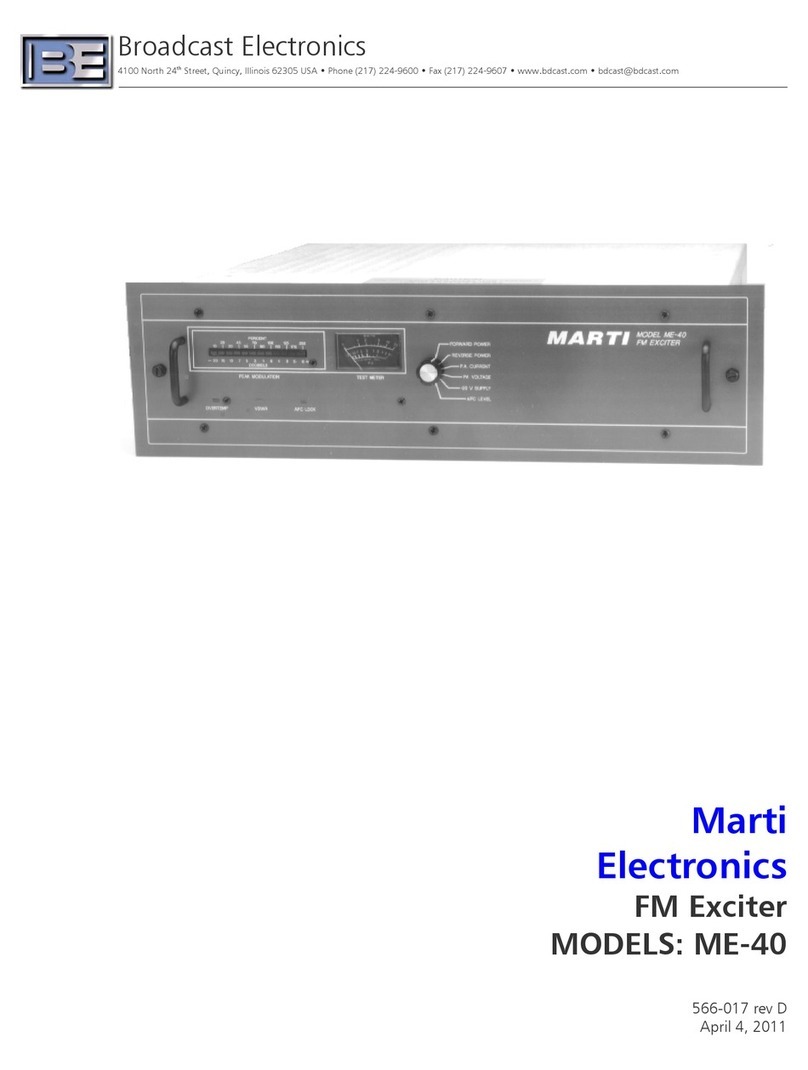
1-2
1-12. AC LINE DETECTION/SYNCHRONIZATION. An ac sample from a winding of transformĆ
er T1 is rectified by diodes D7 and D8 and applied to integrated circuit U6B. U6B funcĆ
tions as a zero phase detector. As the ac line phase approaches zero degrees, U6B will
output a HIGH pulse. The HIGH pulse is applied to: 1) transistor Q2, 2) transistor Q7 of
the soft-start circuit, and 3) ac line detector U5A/U5B. The pulse biases transistor Q2
and optical coupler U2 on. Q2 and U2 will output a pulse each time the ac line phase is
zero. As a result, U2 will output a 120 Hz signal to the controller circuit board.
1-13. U5A and U5B function as an ac line voltage detector. When ac line voltage is present,
U5A will output a OW. The OW allows transistor Q3 to be biased on. With Q3 on, a
+12 volt dc signal is applied to optical coupler U1. When a power supply enable and a
PWM OK signal is applied to U1, U1 will output a reference voltage to a soft-start control
circuit for power supply operation. When ac line voltage is not present, U5A will output a
HIGH, the HIGH biases transistor Q3 off to terminate power supply operation. When ac
power is re-applied, U5B will maintain a HIGH for 100 milliseconds to allow the circuit to
stabilize during turn-on operations.
1-14. In addition to the ac line voltage detection circuit, integrated circuit U6A functions as a
low line voltage detector. When the dc supply is above the threshold at U6A, U6A will
output a OW to bias transistor Q1 off. As a result, a HIGH ac OK signal indicating acĆ
ceptable ac line voltage is applied to optical coupler U9. When the dc supply is below 185
volts, U6A will output a HIGH to bias transistor Q1 on. As a result, a OW ac OK signal
indicating low ac line voltage is applied to optical coupler U9. When the voltage increases
to approximately 190 volts, the output of U6A will go OW to enable the power supply.
1-15. This circuit is also used to detect high ac line voltage potentials. If the ac line voltage is
above approximately 270 volts, transistor Q28 will be biased on. With Q28 on, the input
to U6A will be muted. When the input is muted: 1) the transmitter output power will be
muted and 2) no transmitter fault or emergency condition will be generated.
1-16. SOFT-START CONTROL CIRCUIT. The soft-start control circuit consists of: 1) transistors
Q4 through Q9 and 2) integrated circuit U7. The circuit is designed to generate short
duration pulses in each time the ac line waveform crosses the 0 volt axis. The pulses are
applied to an SCR controlled rectifier to slowly bias the components on during initial start
operations. This operation eliminates the component stress at power-on by limiting the
supply in-rush current.
1-17. The circuit generates the soft-start pulses from two signals: 1) a ramp signal and 2) a
triangle signal. The ramp signal is generated by transistors Q4 and Q5. When ac line
voltage is detected, a +12 volt signal from U1 is applied to transistor Q4. Q4 operates in
association with capacitor C16 and transistor Q5 to generate a ramp voltage. The
triangle signal is generated by transistors Q6 and Q7. Pulses from U6B are applied to
transistor Q7. Q7 operates in association with capacitor C17 and transistor Q6 to gener-
ate a triangle signal. The triangle signal and the ramp signal are applied to comparator
U7. U7 responds by generating a square-wave signal with a short duty cycle when the ac
line phase is zero. The square-wave signal from U7 is applied to soft-start driver transisĆ
tors Q8 and Q9. Q8 and Q9 will slowly bias the rectifier circuit on to limit the current
in-rush.
1-18. POWER FACTOR CORRECTOR CIRCUIT BOARD CONTROL CIRCUIT.
1-19. Transistors Q26 and Q27 control a power factor corrector circuit board (not used in
A-Series AM transmitters). During soft-start operation, ramp voltage will drop below
approximately 3V. When this occurs, the output of transistor Q26 will go OW. This
OW biases transistor Q27 on. With Q27 on, a OW energizes two relays on the power
factor corrector circuit board. With the relays energized, a capacitor is inserted into the
circuit to enable power factor correction.




























